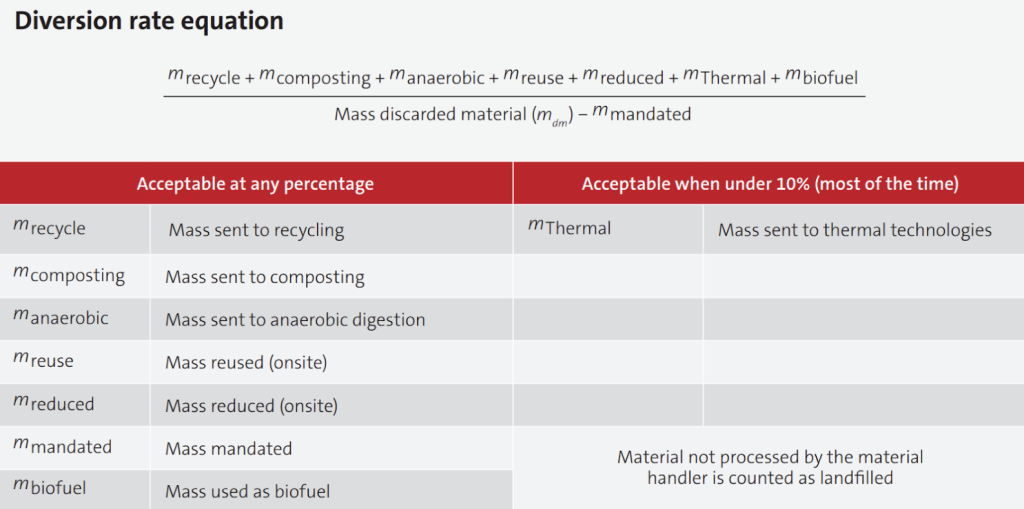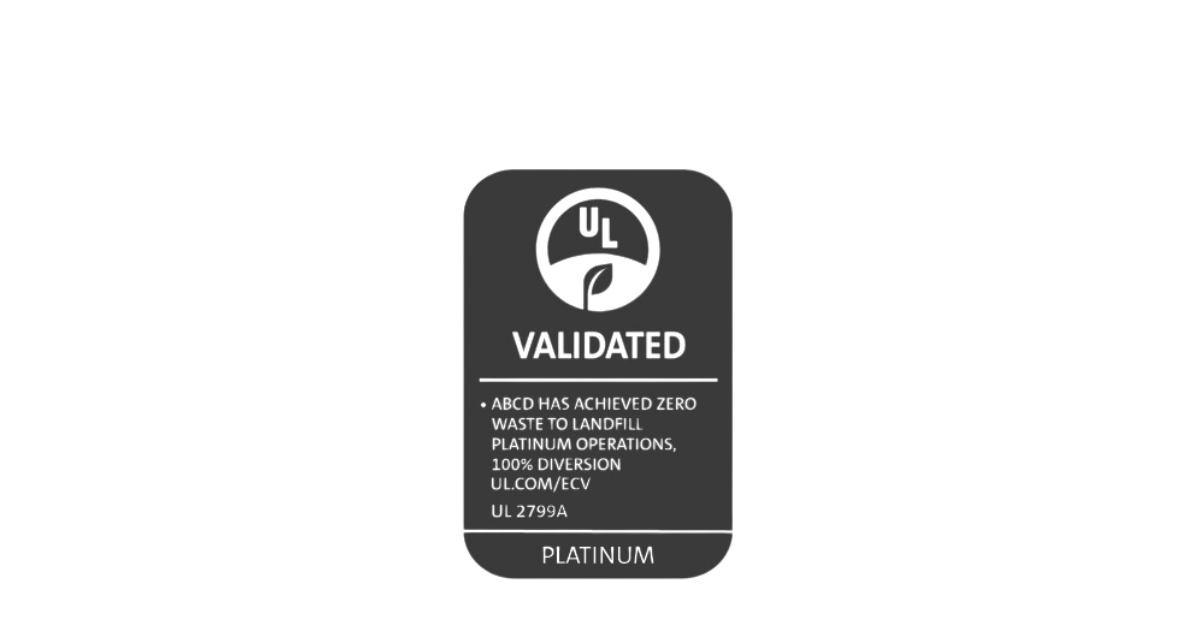The formula used to calculate the zero waste to landfill diversion rate is as follows:

When installing K&N reusable filters, the weight of diverted filter waste counts towards the mreduced, Mass reduced (onsite) weight in the above table.
To calculate the additional mass of diverted waste by using K&N reusable filters for this table, before installing K&N filters, weigh a representative sample of legacy disposable filters from each air handling unit (AHU) operated in the building, when they have reached the end of their service life, as they are removed before they are sent to landfill. Multiply the weights of individual used filters by the number of filters installed in each AHU to derive the total mass of filters being sent to landfill for the building. This is the additional diversion mass, mreduced, to contribute to your table.
Pro Tip
The UL Standard requires each facility of an organization to prove at least 90% diversion through methods other than waste to energy for that facility to achieve Zero Waste to Landfill (ZWTL) designations (Silver, Gold, Platinum). The highest designation, platinum, is validated by UL Solutions when a facility can prove that it consistently achieves a landfill waste diversion rate of 100%. This may not be achievable if your building uses disposable HVAC filters. Your building may now be able to meet this requirement by switching to K&N reusable filters, especially if you show intent to reuse them with, say a washing procedure or cleaning contract.
To learn more about UL Solutions Waste Diversion Credits, click here.




